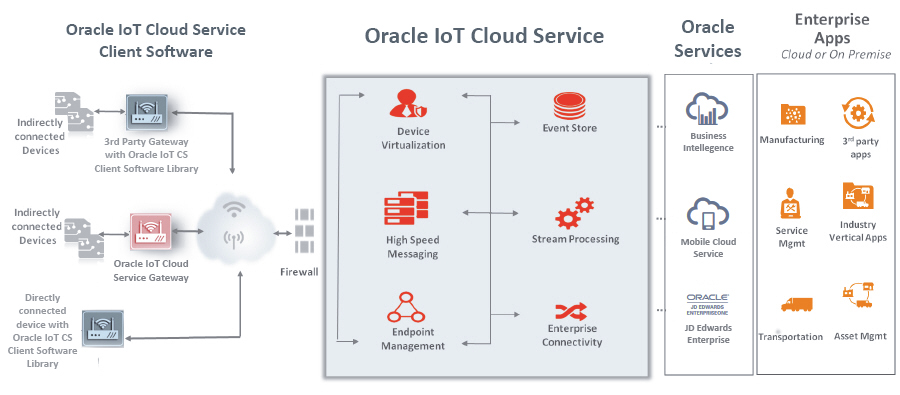Internet of Things (IoT) is the internetworking of physical devices, vehicles (also referred to as “connected devices” and “smart devices“), buildings, and other items embedded with electronics, software, sensors, actuators, and network connectivity that enable these objects to collect and exchange data. (source Wikipedia).
If you have not watched the movie I.T, must watch it today and you will get to the feelings of the Smart-Home concept and how heavily used IOT is showing in the movie.
Oracle is also offering namely Oracle Internet of Things (IoT) Cloud Service product as a part of the Platform as a Service (PaaS) category that enables customers to connect devices to the IOT cloud, analyze data, and alert messages from devices in real-time to make critical business decisions and this can be integrated back to any other application through web services, or with other Oracle Cloud Services, such as Oracle Business Intelligence Cloud Service, etc.
Started exploring IOT so this is 1st post on a voyage to connect “things” with “Internet”, started from the official documentation of Oracle Internet of Things and the flow of the overall IOT is as below:
Typical Workflow for Using Oracle IoT Cloud Service
- Register the device models that are implemented by your devices.
- Create an IoT application.
- Register device
- Configure device to connect to Oracle IoT Cloud Service server.
- Activate previously registered gateway device
- Develop device software using Oracle IoT Cloud Service Client Software
- Develop enterprise applications that use the Oracle IoT Cloud Service REST API
Overall representation or architecture of IoT is as per the below image.

Source: Oracle Book, Using Oracle Internet of Things Cloud Service
Device Virtualization – Oracle IoT Cloud Service exposes each device as a set of:
- Resources with data properties
- Message formats that we can specify.
We can monitor each device endpoint’s health, performance, and location via the client software library API, or with REST calls made to those devices.
we can collect data from your devices using APIs delivered with Oracle IoT Cloud Service Client Software Libraries or Oracle IoT Cloud Service Gateway.
High-Speed Messaging – is protocol independence and bidirectional communication among all the devices in the IoT network including Oracle IoT Cloud Service itself and all the back-end pieces that access the Oracle IoT Cloud Service.
Endpoint Management – IoT Cloud Service provides APIs and the Management Console to manage all of the devices in the IoT network and we can use this console to deploy software to devices and also manage security policy
Event Store – Oracle IoT Cloud Service by default stores all messages sent to and from the devices in a database.
Stream Processing – You can perform real-time analysis of streams of information that are being sent from your registered and active devices to Oracle IoT Cloud Service.
Enterprise Connectivity – Oracle IoT Cloud Service provides a secure communication channel for pushing messages to your enterprise applications, and for your enterprise applications to push or pull messages from Oracle IoT Cloud Service.
During the next posts, we will cover more topics on IoT and I have a plan to take any use case from Smart Home point of view